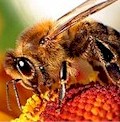It is crucial that all beekeepers use the correct supplies and tools when tending to their bees. Although a satisfying pastime, beekeeping can certainly have its dangers. By incorporating the right beekeeping supplies into regular use though, both experienced and novice beekeepers can lessen the chance of any injury. Extracting the honey is what the majority of your supplies will be for but a few are needed for properly looking after the hive and colony.
A vital component of beekeeping is, in fact, to prevent the beekeeper from being harmed while they tend to the hive and colony. This is performed in a number of ways. One is that the beekeeper to simply don a protective suit. This includes a hat with a veil, thick gloves and a beekeeping suit. The face is the most sensitive-prone part of the body to attack. It is therefore of vital importance for all beekeepers, regardless of experience, to protect their faces with the proper hat and veil. Commonly white in color, the beekeeping suit is constructed of a light material and is also full length. It is designed to not be very easily pierced by the stinger of a bee and thus protecting the beekeeper from the venom of such a sting. Though the gloves can be awkward to use when undertaking some of the more delicate tasks, they are also an important aspect of helping to protect the beekeepers hands when working with the bee colony.
Consider using a "smoker" as it is widely used by beekeepers. The smoker will calm the bees down making it easier to be close to them while you work with the hive. Smokers are devices that discharge smoke using several types of fuel. There are many different and natural forms of the fuel that can be used in smokers. These range from twine, hessian, pine needles, burlap, ridged cardboard and rotting wood. Aerosol cans filled with smoke, paper that has been pulped or tightly compacted cotton are good as smokers as well. The smoke triggers a natural feeding mechanism within the bees. The resulting behavior from the bees is to begin the necessary preparations in the possibility of having to vacate the hive, just as if a real fire had occurred. If guard bees sense that there is danger to the hive they release "alarm" pheromones. The smoke will mask this signal. This leaves the whole colony in a state of confusion. This then gives the beekeeper the opportunity to work in the hive unencumbered with the threat of aggressive behavior from the bees.
It's quite common for beekeepers to supplement the bee's diet with sugar syrup, even though bees are more than capable of foraging for their own food. This stimulates the process of egg laying and also lessens the possibility of starvation during the times of year when their regular food source is running low. The advised method for properly feeding a bee colony is to use a feeder and there is a wide range available to choose from. During winter, use a hive top, a pail or division boards as the inside feeders. During summer, an entrance feeder can be used as this when the bees are at their most active.
The largest element to keeping a beehive is what the colony is actually housed in. Artificial hives are used in beekeeping to house the colony and have a foundation made of wax. This encourages bees to manufacture the comb in a way that will contribute greatly to a straightforward harvest. The foundation itself is a thin sheet of wax that has a hexagonal cell-base pattern embossed onto both sides. This helps the bees to lessen their efforts when putting the combs together.
